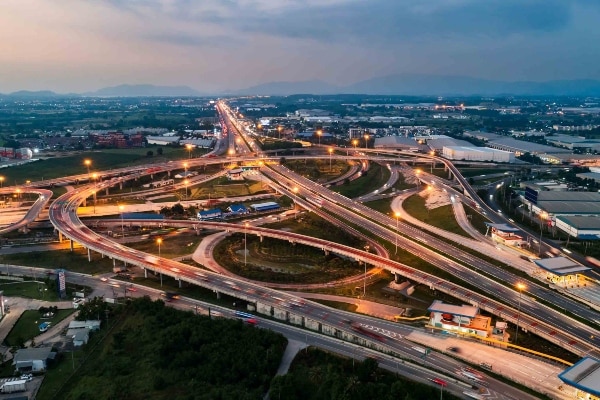-
Featured services
2026 Global AI Report: A Playbook for AI Leaders
Why AI strategy is your business strategy: The acceleration toward an AI-native state. Explore executive insights from AI leaders.
Access the playbook -
Services
Alle Services und Produkte anzeigenNutzen Sie unsere Fähigkeiten, um die Transformation Ihres Unternehmens zu beschleunigen.
-
Services
Network-Services
Beliebte Produkte
-
Services
Cloud
Beliebte Produkte
-
Services
Consulting
-
Edge as a Service
-
Services
Data und Artificial Intelligence
- KI und intelligente Lösungen
- Daten-/KI-Strategie und -Programm
- Data Engineering und Plattformen
- Daten-Governance und -management
- Datenvisualisierung und Entscheidungsfindung
- $name
- GenAI Platforms
- GenAI Industry Services
- GenAI Infrastructure Services
- GenAI Value Transformation
- Data und Artificial Intelligence
-
-
Services
Global Data Centers
-
Beliebte Produkte
-
Services
Application Services
-
Services
Sustainability Services
-
Services
Digital Workplace
-
Services
Business Process Services
-
Services
Generative AI
-
Services
Cybersecurity
-
Services
Enterprise Application Platforms
![]()
IDC MarketScape: Anbieterbewertung für Rechenzentrumsservices weltweit 2023
Wir glauben, dass Marktführer zu sein eine weitere Bestätigung unseres umfassenden Angebotes im Bereich Rechenzentren ist.
Holen Sie sich den IDC MarketScape -
-
Erkenntnisse
Einblicke und RessourcenErfahren Sie, wie die Technologie Unternehmen, die Industrie und die Gesellschaft prägt.
-
Erkenntnisse
Ausgewählte Einblicke
-
Die Zukunft des Networking
-
Using the cloud to cut costs needs the right approach
When organizations focus on transformation, a move to the cloud can deliver cost savings – but they often need expert advice to help them along their journey
-
So funktioniert Zero-Trust-Sicherheit für Ihr Unternehmen
Sorgen Sie dafür, dass Zero-Trust-Sicherheit für Ihr Unternehmen in hybriden Arbeitsumgebungen funktioniert.
-
-
Erkenntnisse
![]()
Copilot für Microsoft 365
Jeder kann mit einem leistungsstarken KI-Tool für die tägliche Arbeit intelligenter arbeiten.
Copilot noch heute entdecken -
-
Lösungen
Alle LösungenWir helfen Ihnen dabei, den Anforderungen an kontinuierliche Innovation und Transformation gerecht zu werden
Global Employee Experience Trends Report
Excel in EX mit Forschung basierend auf Interviews mit über 1.400 Entscheidungsträger:innen auf der ganzen Welt.
Besorgen Sie sich den EX-Report -
Erfahren Sie, wie wir Ihre Geschäftstransformation beschleunigen können
-
Über uns
Neueste Kundenberichte
-
Liantis
Im Laufe der Zeit hatte Liantis, ein etabliertes HR-Unternehmen in Belgien, Dateninseln und isolierte Lösungen als Teil seines Legacysystems aufgebaut.
-
Randstad
We ensured that Randstad’s migration to Genesys Cloud CX had no impact on availability, ensuring an exceptional user experience for clients and talent.
-
-
![Heineken Landing Page]()
NTT DATA und HEINEKEN
HEINEKEN revolutioniert die Mitarbeitererfahrung und die Zusammenarbeit mit einem hybriden Arbeitsplatzmodell.
Lesen Sie die Geschichte von HEINEKEN -
- Karriere
Topics in this article
Supply chains have always been complex and operated under constant pressure. Manufacturers are expected to scale production, reduce downtime and meet customer demand while cutting costs and shortening lead times to generate better returns on capital.
While some disruptions may be unavoidable, the way organizations approach this challenge defines competitiveness in a world of uncertainty.
Addressing the supply chain network from a global perspective, with interconnected production centers, is a clear source of competitive advantage. However, it also requires an end-to-end vision and the ability to respond in real time to any disruption.
AI is a key enabler in this mission, helping organizations build agile supply chains that anticipate issues and deal with operational complexity holistically and in real time.
Nevertheless, as critical as AI is in agile supply chain management, an organization’s ability to learn and embrace change is equally important. This adaptability is essential to continuously evolve and reinvent the operational models and processes underpinning the value chain.
Innovation must also be responsible, because every new system carries implications for security, compliance and trust. Without safeguards, speed can become fragility, and efficiency can give way to risk. Responsible innovation ensures that AI strengthens resilience, protects data and earns the confidence of the people who depend on it.
A client recently asked me to describe real-world examples of how NTT DATA has helped global manufacturers bring AI-enabled agility into their supply chains. I shared the following.
Logistics optimization: Smoothing the flow of materials
The flow of materials through a plant requires precise, real-time coordination. Delays at one stage quickly cascade to the next, creating idle time and bottlenecks, raising operating costs and increasing the need for working capital. Internal logistics, which have long relied heavily on manual scheduling, have struggled to keep up with dynamic production conditions.
Introducing AI-powered logistics optimization changes the equation. By drawing on real-time data across the plant, AI solutions enable synchronized material flows between the transformation, shaping and finishing stages. Instead of reacting to disruptions, such systems can autonomously adjust movements to keep production running smoothly.
It’s no surprise, then, that a recent NTT DATA study on third-party logistics, Navigating change: Insights into evolving dynamics in supply chain, shows that more than a quarter of shippers (27%) now demand transportation and route optimization — pointing to the industry seeing logistics as one of the fastest paths to value. The real-world impact is fewer stoppages, shorter lead times and better use of equipment and people.
When deployed responsibly, these AI logistics solutions also safeguard data and decision-making integrity, ensuring efficiency gains are achieved without creating new risks.
One steel manufacturer is piloting this approach today, using AI to orchestrate both intraplant and interplant logistics. Together, these improvements lay the foundation for greater collaboration and visibility across the supply chain — an area where inbound logistics plays a critical role.
Task management in inbound logistics: Creating clarity and speed
Inbound logistics often suffers from fragmented communication and manual processes. When teams are juggling emails, phone calls and siloed systems, they struggle to prioritize tasks or resolve issues quickly, leading to delays and a higher risk of stockouts.
Introducing AI into task management helps to bring order to this complexity. By integrating diverse data sources and applying intelligent automation, AI can centralize communications, assign tasks dynamically and give everyone — from suppliers to planners — real-time visibility of material flow. The result is a faster response to production-critical issues and clearer accountability across teams.
Equally important, responsible design ensures these systems support transparency in how tasks are prioritized and monitored. This helps manufacturers build trust in automated decisions.
For one global automotive client, this approach has sped up incident resolution and improved responsiveness and collaboration at multiple plants.
Order management optimization: From manual errors to adaptive systems
As inbound coordination becomes more efficient, manufacturers can focus on the next link in the chain: managing customer orders with the same precision and trust. Order management, which is at the heart of supply chain execution, is often bogged down by challenges ranging from errors and incomplete data to last-minute changes.
Order management often falters because of poor data quality. In fact, in our logistics study, both shippers (34%) and third-party logistics providers (39%) say improved data accuracy is one of the greatest returns they expect from AI, highlighting how critical trustworthy data is for supply chain execution.
When these issues take the form of missing order references, incorrect quantities and the recurring need for manual validations, the resulting slowdown in fulfillment erodes customer trust.
Embedding intelligence into order management helps manufacturers operate both smarter and faster. AI-driven systems can validate order data in real time and correct errors automatically. They can also communicate proactively with sales teams and customers to keep them informed about availability or delivery updates. When shortages occur, the systems can even recommend substitutes.
With controls for accuracy and auditability built in, these systems improve data quality and transparency, helping manufacturers build customer trust while driving efficiency.
We have worked with a consumer goods client using this approach to handle outlier orders and optimize order rounding. The results have been striking: Our client has seen significant reductions in manual effort as well as improved accuracy and customer satisfaction.
Transportation efficiency: Orchestrating more reliable deliveries
Disruptions resulting from carrier performance, contract compliance and last-minute disruptions can erode transportation efficiency and increase costs. Today, AI-enabled transportation management systems are beginning to change that. By validating contracts, dynamically allocating transportation, optimizing routes and managing docks in real time, these systems make logistics more adaptive and reliable. They also help classify and resolve incidents quickly, reducing both waiting times and penalties.
The benefits are compelling. Our data shows that nearly three-quarters of shippers believe a third-party logistics provider’s use of AI would influence their partner choice, with many indicating they would even switch providers for stronger AI capabilities. The reason is clear: Responsible AI deployment supports outcomes that shippers prioritize, from transparent routing to contract compliance and fair carrier-performance evaluations.
For one of our clients, a global manufacturer, this approach reduced load assignment times to under three hours while coordinating across more than 70 carriers. The project both saved on costs and improved compliance with contractual obligations.
Assisted maintenance: Reducing downtime and extending asset life
Unplanned downtime remains one of the most disruptive and costly problems on the shopfloor. Many manufacturers still operate in reactive mode, repairing equipment only after it fails. But this approach inevitably shortens asset lifespans, disrupts schedules and inflates repair costs.
Bringing agentic AI to maintenance management enables manufacturers to move toward proactive and predictive models. In fact, an NTT DATA executive report on manufacturing found that 91% of manufacturers believe combining AI and digital twins improves asset performance and supply chain resilience.
With a robust AI infrastructure, systems can log and prioritize incidents, generate work orders with the right parts and skills assigned, and capture structured data for analysis. Equally important, AI-enabled maintenance systems should be designed with responsible innovation in mind. It entails promoting data integrity, transparency and safe deployment while driving efficiency.
Over time, this supports continuous improvement, enabling teams to shift from firefighting to long-term asset reliability.
One of our global manufacturing clients has already deployed this approach in production, with measurable reductions in downtime and improved operational continuity.
Building the case for a responsible, agile supply chain
What these real-world examples have in common is a shift in mindset from reactive problem-solving to proactive orchestration. AI-powered systems enable manufacturers to anticipate issues, adapt in real time, follow the best set of actions when disruptions occur and learn with every cycle.
The five cases I present here have delivered tangible benefits to the organizations that have implemented them. However, to truly unlock competitive advantage, it is essential to take a holistic approach to the entire value chain, reimagining processes by integrating AI capabilities, agentic systems and human-in-the-loop collaboration.
This should not be a one-off initiative but rather a continuous journey of transformation, where organizations consistently use emerging technologies to maximize the value of their assets and capital investments.




